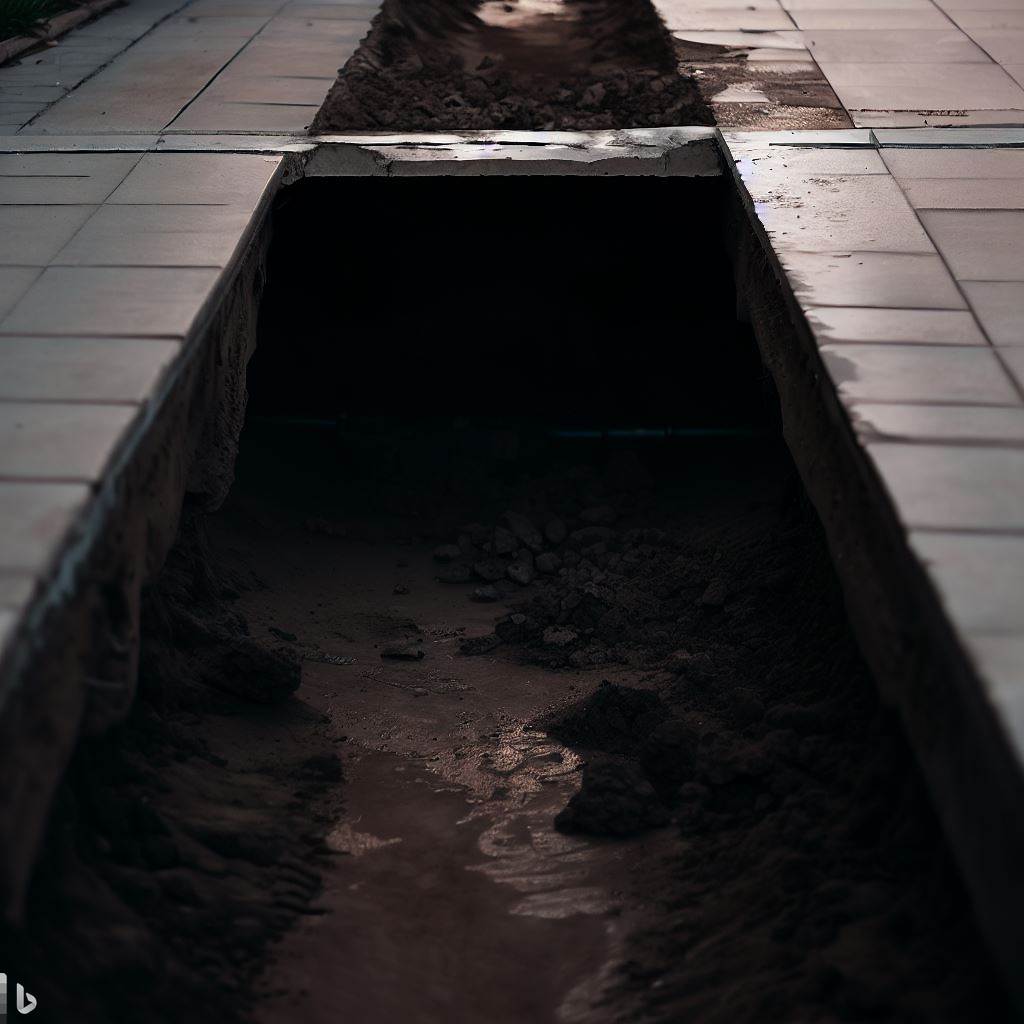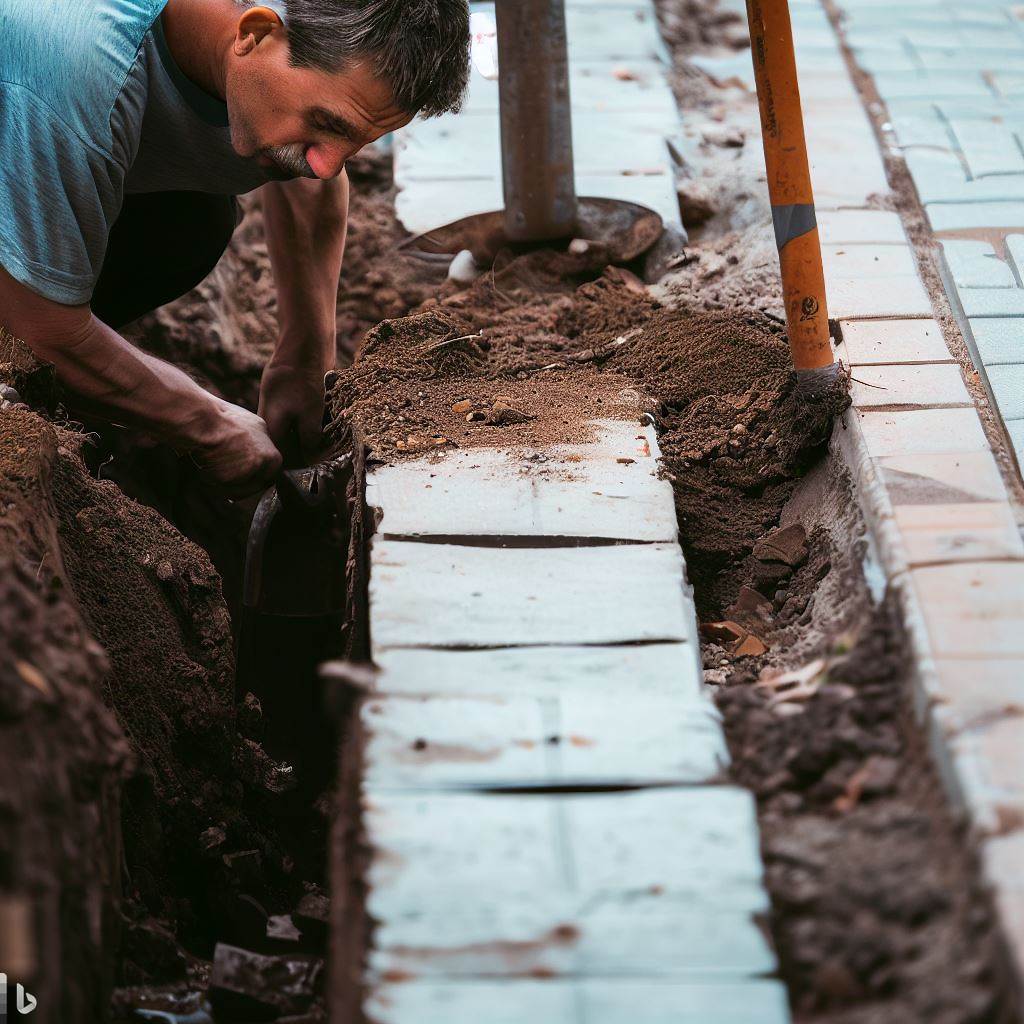Are you vexed by a pesky sidewalk that’s standing between your trenching dreams and reality? Fear not, we’ve got your back! Figuring out how to trench under sidewalks may seem like tackling Mount Everest in flip-flops but hey, even the most daunting tasks have their tricks.
Like an adventurous mole navigating through his subterranean world or Indiana Jones on an expedition to discover lost treasures underground, we will take this journey together. We’ll dig into every tip and trick that makes this Herculean task as easy as baking your favorite cake.
Stay glued while this practical guide makes sure you’re well-equipped for this thrilling excavation venture. Let’s transform this intimidating challenge into child’s play with strategic planning and execution.
Here is an exciting article you might be interested in how to use mapp gas torch
Another article for you hummingbird breathing heavy

Selecting the Right Tools for Trenching Under a Sidewalk
When it comes to trenching under a sidewalk, having the right tools can make all the difference. Here are some essential tools you’ll need:
1. Shovel: A sturdy shovel with a sharp edge will help you break through the soil and dig your initial hole.
2. Pickaxe: This tool is useful for breaking up compacted soil or rocks that may be obstructing your pathway.
3. Spade bit or tunnel boring machine: These tools can help create an opening in the ground without damaging your sidewalk.
4. Piping or conduit material: Depending on your project, you’ll need piping or conduit material that is suitable for underground installations.
Safety Precautions before Beginning Trench Work
Before you start trenching under a sidewalk, it’s important to prioritize safety. Here are some precautions to take:
1. Call 811: Notify local utility companies so they can mark any underground lines before digging.
2. Safety goggles and gloves: Protect yourself by wearing goggles and gloves to prevent injuries from flying debris or sharp edges.
3. Support structures above ground: If there are any structures near the trench site, ensure proper support is in place to avoid collapse.
Techniques of Utilizing a Sidewalk Sleever
A sidewalk sleever is an effective tool for creating tunnels under sidewalks without causing extensive damage. Here’s how you can use one:
1. Measure and mark entry and exit points on either side of the sidewalk where you want to create your tunnel.
2. Insert the drill bit into one end of the sidewalk sleever until it reaches beyond the opposite side of the sidewalk.
3. Securely attach conduit material or piping to the drill bit using duct tape or another suitable fastening method.
4. Start drilling from one side of the sidewalk, slowly guiding the sleever through until it emerges on the other side.
Useful Tips on How to Dig the Initial Hole
Digging an initial hole is crucial for creating a pathway under a sidewalk. Here are some tips:
1. Use your shovel to break through the top layer of soil directly above where you want your tunnel to be.
2. Gradually dig deeper, removing any excess soil as you go along.
3. If you encounter rocks or compacted soil, use a pickaxe to break them up and make way for your tunnel.
Developing a Tunnel between Two Openings under the Sidewalk
Once you have created an opening on each side of the sidewalk, it’s time to develop a tunnel connecting them. Follow these steps:
1. Insert a conduit rod into one opening and push it forward as far as possible towards the opposite opening.
2. Once reached across, pull back slightly and insert another rod section onto what is now sticking out from both sides.
3. Continue this process until there is a clear path connecting both openings under the sidewalk.
Pushing Conduit or Pipe through Created Pathway
With your tunnel in place, now comes installing your desired piping or conduit material underneath. Here’s how:
1. Attach one end of your piping or conduit material securely to one end of your conduit rod using appropriate connectors.
2. Ensure tight fittings so that the pipe doesn’t detach midway
3. Lubricate the inner surface with soap/water mix for easy insertion
4. Gently push/pull the conduit rod while feeding the pipe into the created pathway till it reaches across outside.

Procedure to Replace and Compact Soil after installing Pipes/Conduits underneath
After successfully laying your pipes or conduits, it’s essential to carefully replace and compact the soil. Follow these steps:
1. Fill the tunnel with soil, ensuring that it is well-distributed along its entire length.
– Use a shovel and hand trowel for even distribution
– Compact soil gently using a tamper or compactor machine
2. Repeat the process until the tunnel is completely filled with compacted soil.
Maintenance and Potential Problems with Underground Installations under Sidewalks
Once you have finished trenching and installing underground piping under a sidewalk, regular maintenance is key to ensure longevity. Be mindful of potential issues such as:
1. Clogging: Regularly inspect and clean your underground installations to prevent clogs caused by debris or root intrusion.
2. Leaks: Keep an eye out for any signs of leaks in your piping system, such as damp spots or reduced water pressure.
3. Settling: Periodically check for any settling of soil around your underground installations that may affect their integrity.
Conclusion
With this step-by-step guide, you’re now equipped with the knowledge needed to successfully trench under a sidewalk. Remember to prioritize safety at all times during this DIY project. Happy digging!
If you found this article exciting, this is another great read: hummingbird broken wing
We also found this great pick for you: hummingbird hovering in front of my face
FAQs On how to trench under sidewalk
Q: How do I trench under sidewalks?
A: Trenching under sidewalks can be done using a step-by-step approach. Here’s how:
Q: What tools do I need to dig under a sidewalk?
A: To dig under a sidewalk, you’ll need a few tools such as a shovel, a pickaxe, a trenching shovel, and a digging bar.
Q: Can I use a PVC pipe to run under the sidewalk?
A: Yes, a PVC pipe is commonly used for this purpose. It is durable, resistant to corrosion, and easy to work with.
Q: How deep should I dig the trench for the pipe under the sidewalk?
A: The trench should be at least 4 inches deep to accommodate the pipe and provide enough clearance.
Q: Is it necessary to use a sleeve when running the pipe under the sidewalk?
A: Using a sleeve is recommended to protect the pipe from being damaged by the sidewalk or driveway.
Q: How do I connect the sprinkler pipe to the pipe under the sidewalk?
A: You can use a pipe adapter to connect the sprinkler pipe to the pipe running under the sidewalk.
Q: What is the best way to dig under a sidewalk or driveway?
A: The best way is to make a trench perpendicular to the sidewalk or driveway, allowing you to easily slide the pipe through.
Q: What should I do if I encounter an obstacle while digging under a sidewalk?
A: If you encounter an obstacle, it’s best to adjust the angle of the trench or consider using a different path.
Q: How long should the pipe be when running it under the sidewalk?
A: The pipe should be longer than the sidewalk to ensure proper installation and connection.
Q: Can I use a garden hose to push the pipe through the sleeve under the sidewalk?
A: Yes, you can use a garden hose to create pressure and push the pipe through the sleeve.

